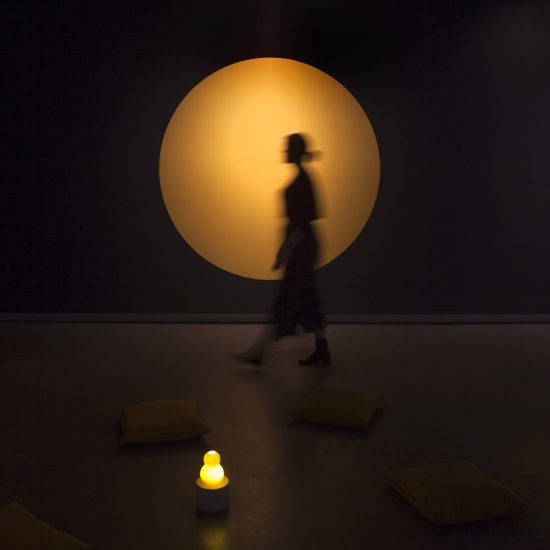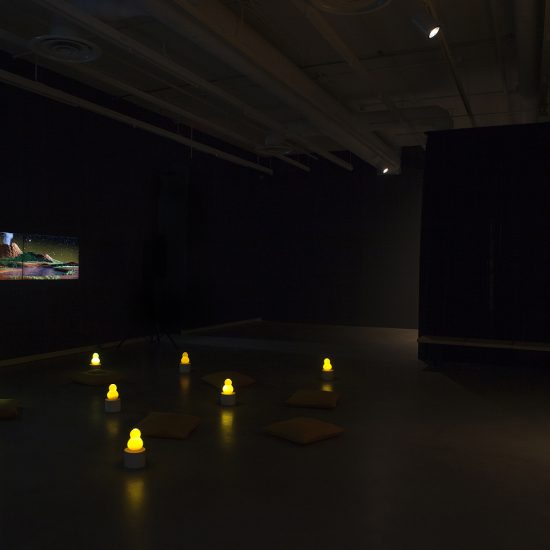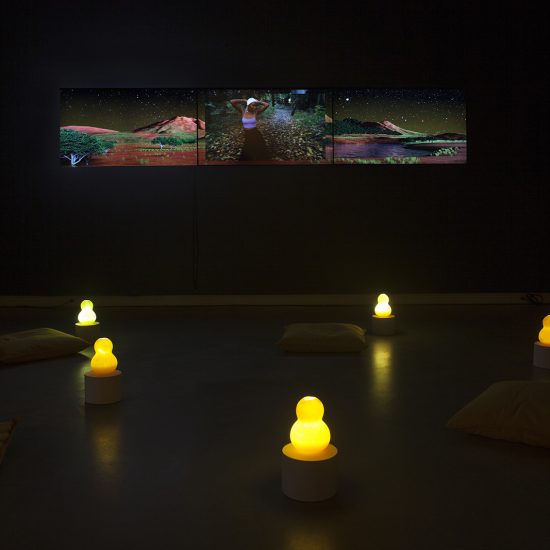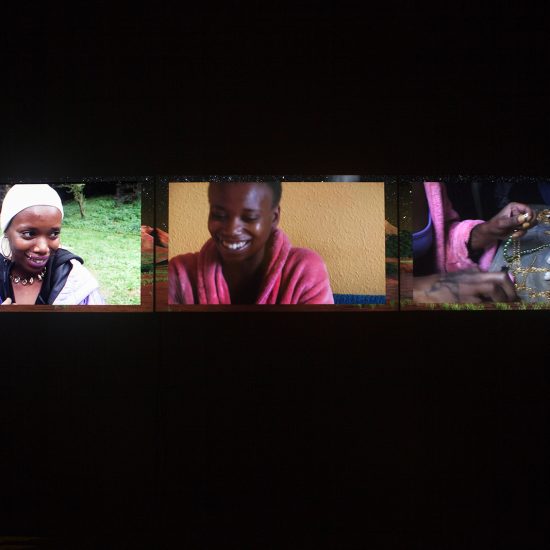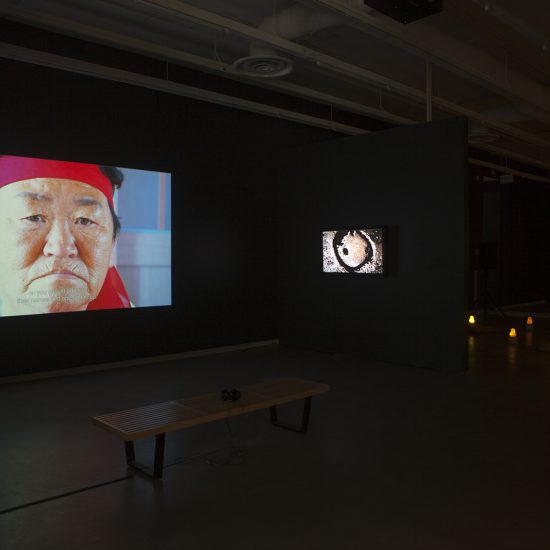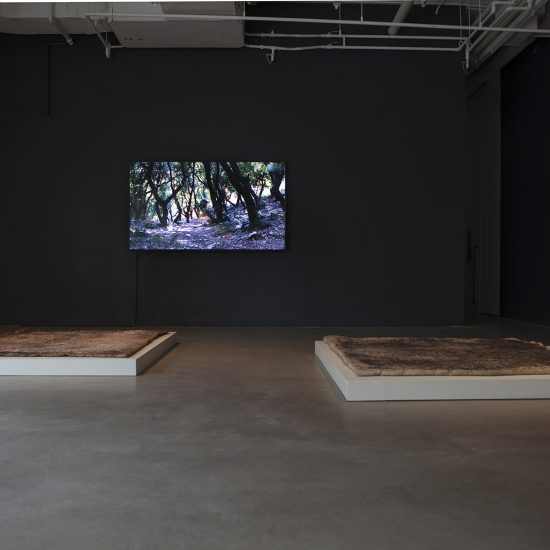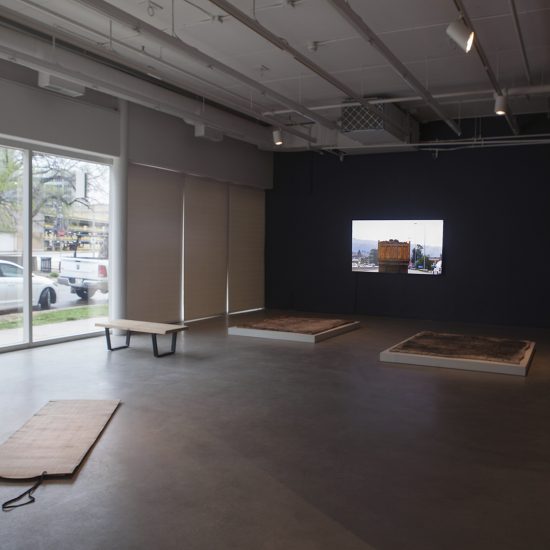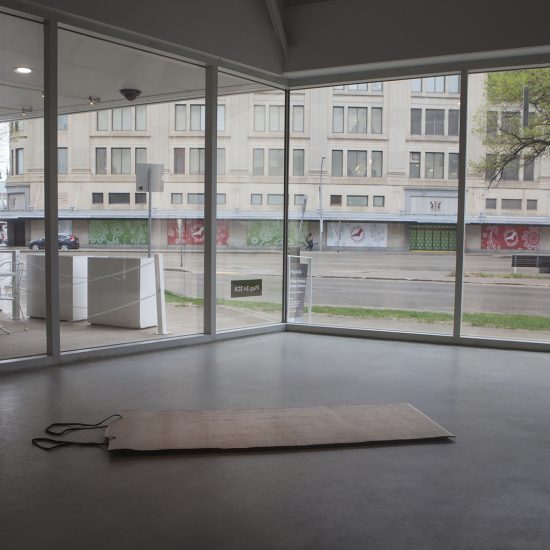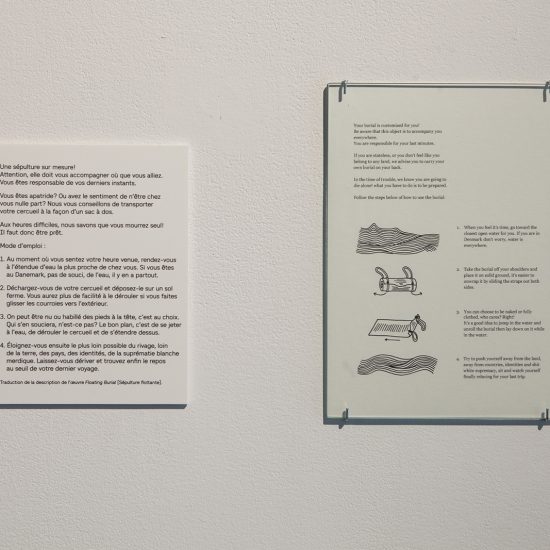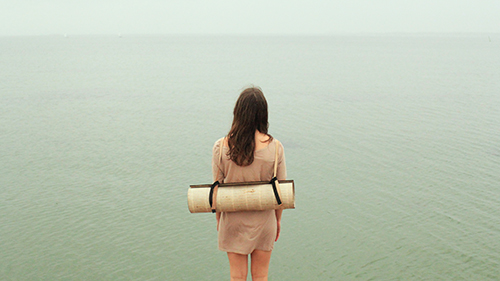
Plug In Institute of Contemporary Art is pleased to present:
A Place of Memory: Contexts of Existence
Curated by Irene Campolmi
Featuring Jane Jin Kaisen, Linda Lamignan, Dala Nasser, Jean Paul Riopelle, Silvia Rosi and Samara Sallam
May 10 – July 13, 2024
Opening reception & book launch | May 10 | 6 – 9 pm
Curator Walkthrough | May 10 | 7:30 pm
Screening & Panel Discussion | Halmang by Jane Jin Kaisen | May 11 | The Output, Video Pool, 100 Arthur Street | 3 pm
Plug In ICA is excited to announce A Place of Memory: Contexts of Existence, an exhibition curated by Irene Campolmi featuring artists Jane Jin Kaisen, Linda Lamignan, Dala Nasser, Silvia Rosi, Samara Sallam and Jean Paul Riopelle.
A Place of Memory: Contexts of Existence is an exhibition that reflects on what a context is, what it means, and how it creates the conditions for artists to manifest new views of the world we live in. A context is both a physical, geographically located place and a series of emotional, social, and political events that occur at a specific moment in time. It is a spatial and temporal coordinate in the collective memory where an individual’s story merges, for a moment, with history writ large.
The Latin etymology of the word context means to weave together or to weave within. Taking Jean Paul Riopelle’s life contexts as a point of departure, the exhibition looks at travelling as the primary means through which different contexts are connected and memories woven. By blending the memories of where we come from with those of where we go or land, travelling allows us to temporarily experience new ways of living and to hold onto these memory for the future.
Because as humans “we chart our lives by everything we remember,” being “born and [hav]ing our being in a place of memory,” as the African American author bell hooks wrote in her book Belonging, weaving memories is essential to creating context. For centuries, artists have been among the most mobile subjects in societies, able to travel the globe and cross-pollinate various cultural contexts with thoughts, ideas, and views of the world. Riopelle was one of these artists; like many of his peers, he lived in a Western context between the world wars. Born in Montreal, he lived in Paris, Vétheuil and Saint-Cyr-en-Arthies before returning to Canada to settle in L’Isle-aux-Grues, Quebec. He grew up experiencing the aftermaths of modernism and embraced travelling as a natural way to belong somewhere else. Riopelle was the first known Canadian artist to create a professional network in Europe, something that became pivotal for his career.
Now, it is certainly challenging for an exhibition to add new perspectives on the work of one of Canada’s most renowned artists, but it is not impossible to take inspiration from his life, work, and reflections to engage in new journeys. To honour the centenary of Riopelle’s birth, the Musée d’art de Joliette, with the support of the Audain Foundation and the Jean Paul Riopelle Foundation, celebrates the legacy of one of the most influential artists of the twentieth century, whose work and life have had an impact both locally and internationally. Taking a step forward from modernism and from mobility as being directly connected to the modernist ideas of progress, evolution, and growth, the show explores what moving across different contexts means for an artist today. In our globalized world, awash in feminism, queerness, postcolonialism, the aftermath of Arab Springs, Black Lives Matter, and the pandemic, mobility is a necessity, rather than just a trend.
A Place of Memory: Contexts of Existence reflects on how a context – a place defined by specific geopolitical, social, and temporal factors – can shape an artist’s work and practice. Whereas travelling, living abroad, and being mobile were unconventional practices for early-twentieth-century artists, by the twenty-first century living in two countries seems a sine qua non for any artist who wants to build a career. Rather than comparing how views on artists’ mobility have differed in the twentieth and twenty-first centuries, the exhibition holds a mirror up to the present and introduces what modernist art history has overlooked for decades: the voices of female and nonbinary artists. Looking into their experience, the show takes us across the many contexts that they come from, pass through, and inhabit.
The participating contemporary artists – Jane Jin Kaisen, Linda Lamignan, Dala Nasser, Silvia Rosi, and Samara Sallam – were born, raised in, currently live in, or are emotionally attached to non-Western–influenced geographies. Through their work, travelling is presented at a distance from the Western European experience and given another meaning in relation to moving across contexts, labelled differently – mobility or migration – depending on who is moving.
Mobility is a feature of the twenty-first-century lifestyle and has become almost a form of nomadism that shortens geographical and cultural distances, and that also reflects the generational desire (or anxiety) to not set down roots in any specific context or mentality. Mobile people live and work across different countries and shape hybrid identities for themselves. Migration, instead, is a process marked by detachment, whether physically imposed or chosen, in which the birthplace is missed as if it were a phantom limb.
The exhibition is built around a wall symbolizing a temporal line, which, like a benchmark, divides artworks testifying to modern mobility from those informing us about today’s global migration movements. Using this display device, the show traces an emotional cartography in which the places in the artists’ memories are included in broader history.
Presented as part of the Riopelle centennial celebrations thanks to the generous support of the Audain Foundation, in collaboration with the Jean Paul Riopelle Foundation.

Currently Senior Curator for International Projects at KØS Museum of Art in Public Spaces, Irene Campolmi has work
Jane Jin Kaisen
Born in 1980 in Jeju, Republic of Korea, Jane Jin Kaisen moved to Denmark as a child; she is still based there, dividing her time between Copenhagen and Berlin. Nourished by a long and detailed research phase, ranging from the exploration of archives and literary texts to her own collection of images and sounds, Kaisen looks at rites as the wellspring from which collective and individual memory draw their source. In her work, she explores how the individual memory of lost stories intersects with the larger history of Korea, marked by war, migration, and battles on the border. Presented in the South Korean Pavilion at the Venice Biennale in 2019, the film installation Community of Parting brings into play past and present, the eternal and the temporal, creating a layered, performative, and multi-voiced work that explores the ancient shamanic myth of the abandoned princess Bari. Kaisen engages with female Korean shamanism as an ethics and aesthetics of memory and as mutual recognition across time and space.
Linda Lamignan is a non-gender-identified artist, born in Norway to a Nigerian family, and currently based in Denmark. Their practice unfolds through sculpture, performance, film, sound, and lyrics that they write, compose, and perform. As they look into how people, plants, fruits, and inorganic elements are frequently subject to being taken away from their place of origin and forced to recontextualize elsewhere, their work usually unfolds through several chapters that compose a more extensive body of work, usually titled after a poem, a lyric, or a book.
Dala Nasser was born and raised in South Lebanon and currently lives in Beirut. Throughout her career, Nasser has developed processes to make visible, even if abstractly, the historical and cultural layers that mark the interactions among people, nature, and architecture in the land where she was born and raised and currently lives. Nasser identifies herself as a material and process-based artist working through abstraction to make alternative forms of existing images. In her practice, she examines human and nonhuman entanglements in the constantly deteriorating environmental, historical, and political conditions that result from extraction practices and generations of colonial erasure.
Jean Paul Riopelle was born in Montréal on October 7, 1923. His life, like his work, was marked by movement and travel. He settled in France in the 1940s, spending nearly forty years there. His work and thirst for discovery led him to voyage across Europe and America, into such remote corners as the Arctic, before his return to Québec in 1990. He passed away on March 12, 2002, at his home on Isle-aux-Grues. Riopelle’s oeuvre transcends borders, and to this day, he is considered one of the most important and influential Canadian artists of his generation.
Silvia Rosi, born in Italy to Togolese parents and currently based in London, uses these fabrics as the background (or, rather, the “context”) to stage a few of the photographs from the series Teacher Don’t Teach Me Nonsense, a collection of visual artworks that retraces her personal family history drawing on her Togolese heritage and the idea of origins. Rosi explored the theme of family history in a previous photographic work called Encounter, in which she took portraits of herself playing her mother and father, while narrating their experience of migration from Togo to Italy.
Samara Sallam, a stateless Palestinian born in Damascus in 1991, has trained as a visual artist, a journalist, and a hypnotherapist. In her life and career, she has found different forms of expression, including filmmaking, performance, herbalism, and coding, to translate the experience of rootlessness and to present the violence of political exclusion and the poetics of living, seeing, and feeling life beyond its denial.
Acknowledgements
We are on Treaty 1 Territory. Plug In ICA is located on the territories of the Anishinaabeg, Cree, Oji-Cree, Dakota, and Dene peoples, and the National Homeland of the Red River Métis. Our water is sourced from Shoal Lake 40 First Nations.
This exhibition is produced and circulated by the Musée d’art de Joliette.
Presented as part of the Riopelle centenary celebrations thanks to the generous support of the Audain Foundation, in collaboration with the Jean Paul Riopelle Foundation. We also thank the Italian Institute of Culture in Montreal and the Danish Arts Foundation.
Plug In ICA extends our heartfelt gratitude to our generous donors, valued members, and dedicated volunteers. We acknowledge the sustaining support of our Director’s Circle. You all make a difference.
We would like to The Winnipeg Foundation for their ongoing support of Plug In ICA.
We gratefully acknowledge the support of the Canada Council for the Arts, the Manitoba Arts Council and Winnipeg Arts Council. We could not operate without their continued financial investment and lobbying efforts.
Plug In ICA relies on community support to remain free and accessible to all, and enable us to continue to present excellent programs. Please consider becoming a member of Plug In ICA and a donor at plugin.org/support or by contacting Caitlin Thomas-Dunn at caitlin@plugin.org.
For more information about our programming, contact Luther Konadu at luther@plugin.org.
For general information, please contact: info@plugin.org or call 1.204.942.1043.



